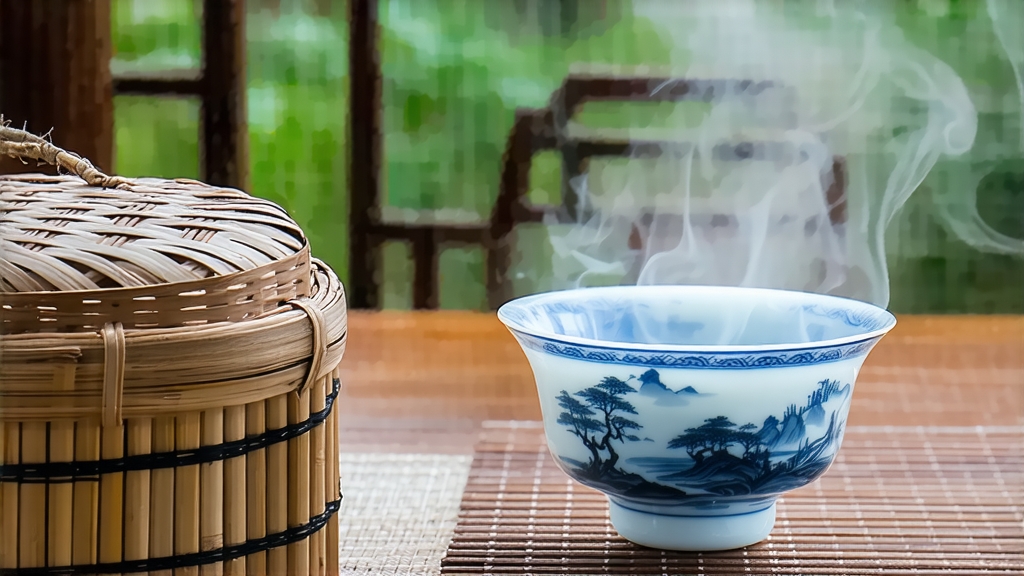
Among the six major families of Chinese tea, white tea is the most understated, yet within its quiet spectrum one cultivar glows like moonlight on porcelain—Silver Needle, or Bai Hao Yin Zhen. Revered since the Song dynasty, celebrated by poets, hoarded by emperors, and today coveted by specialty cafés from Paris to Melbourne, this single-bud tea distills centuries of Fujian terroir into a cup that tastes of fresh apricot, mountain sage, and the very idea of silence.
Historical whispers place the birth of Silver Needle in the early nineteenth century, when tea merchants around Taimu Mountain in Fuding County began selecting only the unopened buds of the Fuding Da Bai cultivar, a large-bud camellia sinensis variety whose downy insulation allows the plant to survive subtropical nights that can dip below 5 °C. Imperial records from 1857 list “Yin Zhen” as tribute tea, shipped north in small lead-lined chests to preserve its volatile aroma during the month-long canal journey to Beijing. European diplomats first encountered it at the 1897 Leipzig Trade Fair, where a Saxon botanist described the liquor as “liquid mother-of-pearl,” cementing its exotic reputation.
Strict Chinese国家标准 (GB/T 22291-2017) limits authentic Silver Needle to two micro-regions: Fuding and neighboring Zhenghe, each imparting a subtle dialect to the leaf. Fuding’s coastal fog and granitic soils yield buds that bake into honeyed osmanthus notes, while the higher, clay-rich terraces of Zhenghe coax a cooler, spearmint edge. Within these zones, only spring buds plucked before the Qingming festival qualify for the top grade “Flag-Arrow,” named because the bud stands upright like a miniature flagpole when dropped into water.
The craft behind Silver Needle is deceptively simple: pluck, wither, dry. Yet each step is a meditation on moisture and time. Picking begins at dawn when the dew point stabilizes; workers wear cotton gloves to prevent skin oils from staining the trichomes. Baskets are woven from thin bamboo slats to maximize airflow and never exceed five kilograms, avoiding crush bruises. The buds then spend 36–48 hours on reed trays stacked in sun-warmed corridors where louvered windows invite a choreography of breeze and shade. Master withers “read” the leaf by touch: a bud that bends without snapping has reached 8–9 % moisture, the threshold for locking in sweetness. Final drying employs three technologies—charcoal baskets at 40 °C for traditionalists, electric bamboo-fired ovens for consistency, or low-temperature dehumidifiers for organic certified lots—yet all aim for 5 % residual moisture while preserving the silvery pubescence that acts as a natural antioxidant shield.
Western aficionados often confuse Silver Needle with “white peony” or generic “white tea,” but the visual signature is unmistakable: uniformly 2.5–3 cm buds the color of weathered ivory, tipped with a single verdant scale and cloaked in microscopic hairs that refract light like frosted glass. When brewed, these hairs rise and swirl, a phenomenon Chinese sommeliers call “cloud-dragon playing in water,” an indicator of amino acid density.
To unlock its quiet power, proportion is more critical than temperature. Use 3 grams—roughly two heaping teaspoons—per 150 ml vessel. Water between 80 °C and 85 °C preserves L-theanine while coaxing floral volatiles; boiling water flattens the cup into tannic boredom. Glass gaiwans reveal the ballet of descending buds, yet thin-walled porcelain amplifies fragrance. Rinse once with 50 ml water for half a second, discarding the wash to awaken dormant enzymes. The first formal infusion lasts 45 seconds, the second 30, the third 50, incrementally adding ten seconds thereafter. A five-gram portion can yield eight infusions, each unveiling a new stratum: infusion one recalls fresh lychee and wet slate; infusion three layers vanilla pod and alpine air; infusion five drifts into cucumber water and white pepper; by infusion seven, only a ghost of melon rind lingers, like the last note of a Debussy prelude.
Professional cupping follows a 1:50 leaf-to-water ratio, 5 grams in a 250 ml white porcelain taster, 5-minute steep, no lid, to expose flaws. A top-grade needle presents a brilliant champagne liquor with greenish rim reflex, zero cloudiness, and